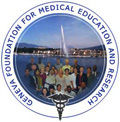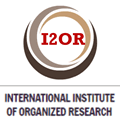Guiding activity and communication systems in psychological development in adolescence and youth
Keywords:
desarrollo psicológico; desarrollo de la personalidad; comunicación; adolescenciaAbstract
During adolescence, physiological changes—such as endocrine and neurovegetative transformations—are intertwined with complex psychological processes: identity formation, hypothetical-deductive thinking, and critical self-assessment. At this stage, formal activity systems (such as studying) and informal activity systems (such as peer relationships), as well as communication systems (family, teachers, peers), play a determining role in shaping personality.
Downloads
References
1. Domínguez García L. Psicología del desarrollo. Problemas, principios y categorías [Internet]. México: Ed Interamericana de Asesoría y servicios S.A. del C.V; 2006 [citado 22/08/2025]. Disponible en: https://bibliotecas.ufu.br/search/google/Psicolog%C3%ADa%20del%20desarrollo.%20Problemas%2C%20principios%20y%20categor%C3%ADas
2. Cabrera Ruiz II, Méndez López AJ, Padrón Ruiz I. Modelos y teorías psicológicas del aprendizaje. Aspectos básicos [Internet]. Valencia: Tirant Lo Blanch; 2023 [citado 22/08/2025]. Disponible en : https://editorial.tirant.com/es/libro/modelos-y-teorias-psicologicas-del-aprendizaje-aspectos-basicos-isaac-iran-cabrera-ruiz-9788411694810
3. Petrovsky AV. Desarrollo de la personalidad y el problema de la actividad rectora. Folleto. Facultad de Psicología. La Habana: Universidad de La Habana; 1988.
4. Hedegaard M. The Dynamic Aspects in Children’s Learning and Development. In: Hedegaard M, Edwards A, Fleer M. Motives in Children’s Development: Cultural-Historical Approaches. Reino Unido: Cambridge University Press; 2011.
5. Domínguez García L. ¿Qué es la personalidad? En: Calviño M. Descubriendo la Psicología. La Habana: Editorial Academia; 2017.
6. Hidalgo Vicario MI, Rodríguez ML, Muñoz Calvo MT. Medicina de la Adolescencia. Atención Integral. 3ed. Oviedo: Edición Ergón; 2021 [citado 22/08/2025]. Disponible en: https://www.adolescere.es/libro-medicina-de-la-adolescencia-atencion-integral-3a-edicion/
7. Pérez Pascual M, Salmerón Ruiz M. El entorno y la influencia en la adolescencia: familia, amigos, escuela, universidad y medios de comunicación. Pediatr Integral [Internet]. 2022 [citado 14/05/2025]; XXVI (4): [aprox. 2p.] Disponible en: https://www.pediatriaintegral.es/publicacion-2022-06/el-entorno-y-la-influencia-en-la-adolescencia-familia-amigos-escuela-universidad-y-medios-de-comunicacion/
8. Iglesia C, Jara G, Murillo Y, Gutiérrez I, Ramírez RR, Díaz A, et al. Desarrollo intelectual en la adolescencia. Semilla Científica [Internet]. 2020 [citado 14/05/2025]; 1: [aprox. 3p.]. Disponible en: https://revistas.umecit.edu.pa/index.php/sc/article/view/813
9. Méndez Sánchez MA, Ghitis Jaramillo T. La creatividad: Un proceso cognitivo, pilar de la educación. Estudios pedagógicos (Valdivia)[Internet]. 2015 [citado 14/05/2025]; 41(2): [aprox. 2p.]. Disponible en: https://www.scielo.cl/scielo.php?script=sci_arttext&pid=S0718-07052015000200009
Downloads
Published
How to Cite
Issue
Section
License
Copyright (c) 2025 Celia Victoria Reyes Morejón, Aimee Fournier Orizondo, Mislandy González Guevara

This work is licensed under a Creative Commons Attribution-NonCommercial 4.0 International License.
Authors who have publications with this journal agree to the following terms:
- Authors will retain their copyright and assign to the journal the right of first publication of their work, which will simultaneously be subject to a Creative Commons License / Attribution-Noncommercial 4.0 International (CC BY-NC 4.0) that allows third parties to share the work as long as its author and first publication in this journal are indicated.
- Authors may adopt other non-exclusive license agreements for distribution of the published version of the work (e.g., depositing it in an institutional repository or publishing it in a monographic volume) as long as the initial publication in this journal is indicated.
- Authors are allowed and encouraged to disseminate their work through the Internet (e.g., in institutional telematic archives or on their web page) before and during the submission process, which can produce interesting exchanges and increase citations of the published work. (See The effect of open access).





 October 15 2025
October 15 2025


